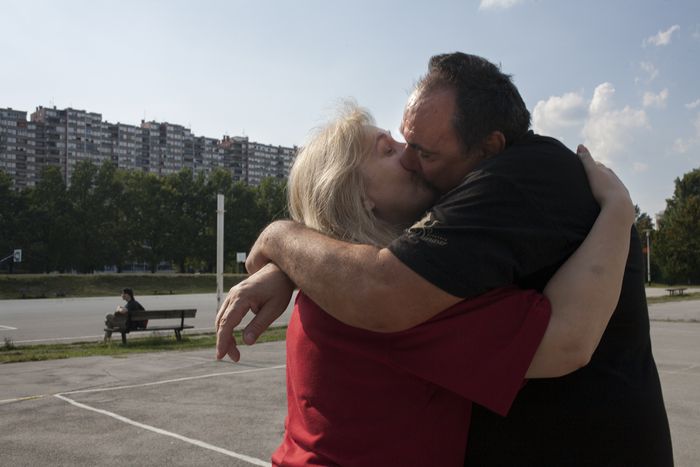
Life in 'Mamutica', the biggest apartment complex in Croatia
Published on
Translation by:
Bethan MooreCroatia’s history, with the Socialist Federal Republic of Yugoslavia, the civil war and its entry to the European Union in 2013, depicts a rapidly changing world. Yet the district of Travno in Novi Zagreb (New Zagreb) never seems to change. Be ready for a fascinating intersection of people, cultures and dreams
'Mamutica' is the nickname of the biggest building in Croatia and the former Socialist Federal Republic of Yugoslavia. With a length of 240 metres and standing at roughly 70 metres high, it looks like a kind of concrete animal. It can be found in the Travno district of Novi Zagreb. The district is beyond the banks of the river Sava, on the opposite side of the old centre of Zagreb, which was developed along functionalist lines. Its construction started in the 1950s and took three decades to finish. The Travno district was conceived in the 1970s and is characterised by its big central park. At its western end towers Mamutica.
Reassuring stability
The quality of life in Mamutica is the ‘little secret’ shared by its residents. The shared spaces and greenery encourage a community based lifestyle. This is quite different to the life of the city dweller, which is described as ‘inhuman’ and ‘alienating’ according to some of the residents that I meet.
However viewed from the outside, these anonymous concrete mammoths seem to be culturally sterile sleeping quarters to the majority of people. Among the occupants are some who used a reworked version of Pushkin’s The Tale of the Fisherman and the Fish to illustrate the envy of neighbours and the sense of disenchantment which are predominant in the district, and in Croatia in general. After surviving important historical events, the inhabitants of the ‘mammoth’ look towards an uncertain future with apprehension. As the ethnologist Valentina Gulin says, ‘the concrete of the large building seems to be their only certainty. It is a reassuring stability.’
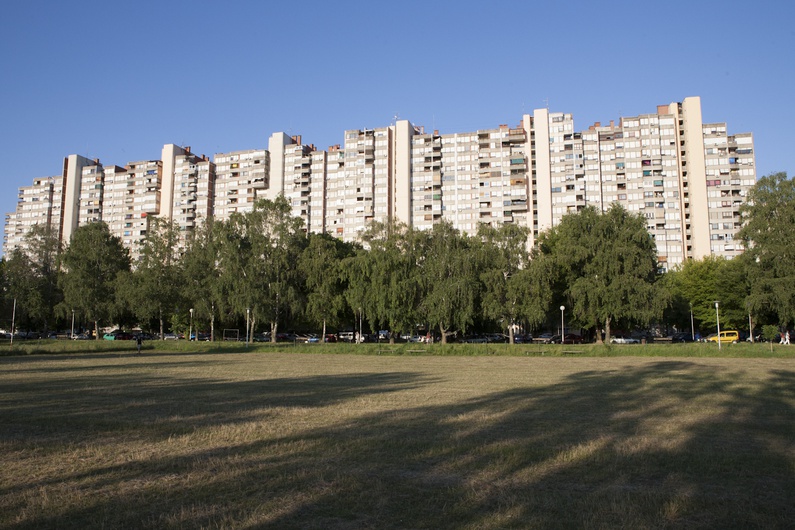 The following is visual journey through the spaces and among the inhabitants of this ‘Croatia in miniature’, as a way to reflect on the identity of this new European neighbour.
The following is visual journey through the spaces and among the inhabitants of this ‘Croatia in miniature’, as a way to reflect on the identity of this new European neighbour.
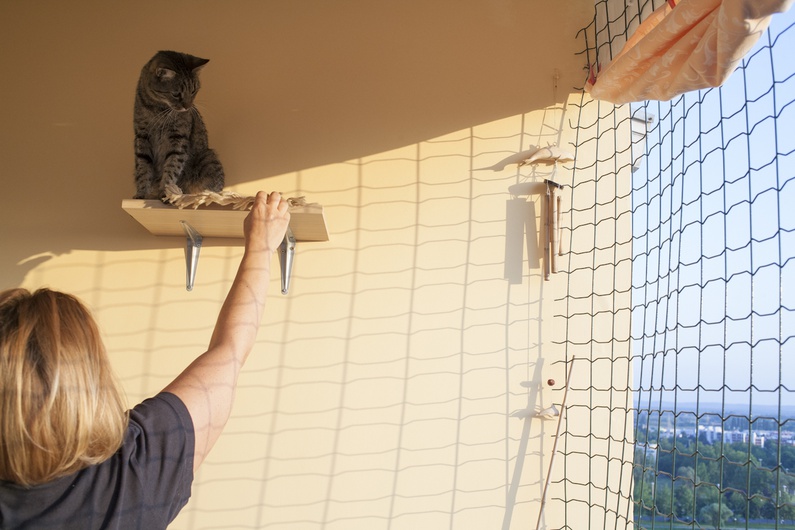 With 776 apartments over 18 floors and six main entrances, Mamutica (the feminine of mammoth in Croatian) is an apartment complex built in Zagreb in 1974. Its little brother, called ‘little mammoth’, sits opposite and contains 390 apartments. Before the civil war, 5, 000 people lived there. In 2011 however there were 2, 675 residents in 1,166 homes.
With 776 apartments over 18 floors and six main entrances, Mamutica (the feminine of mammoth in Croatian) is an apartment complex built in Zagreb in 1974. Its little brother, called ‘little mammoth’, sits opposite and contains 390 apartments. Before the civil war, 5, 000 people lived there. In 2011 however there were 2, 675 residents in 1,166 homes.
‘Novi Zagreb is an example of rationalist and functionalist architecture,’ says Professor Mirkovic, the architect of Mamutica. ‘Today architecture is only a backdrop to confused town planning. There are different interests.’ In fact everything needed for the essentials of daily life - such as shops, the post office, services, schools and nurseries, is at your fingertips. It is Le Corbusier’s ‘machine for living’.
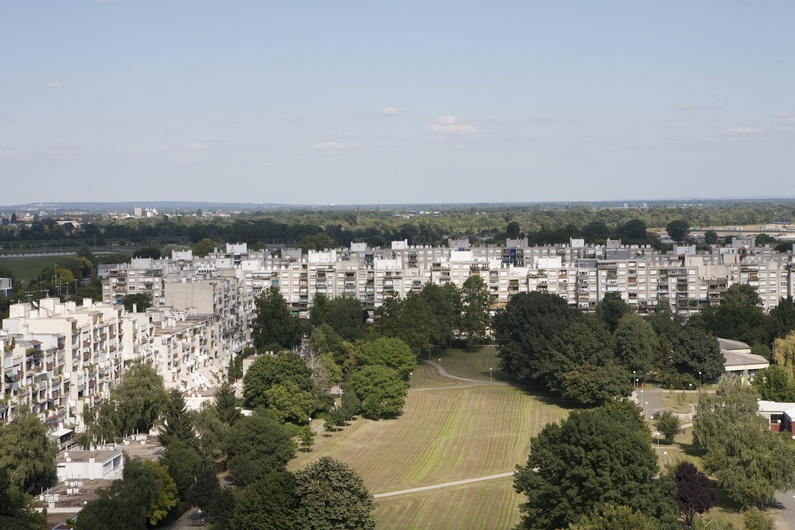 This is the park or the ‘district living room’, as seen from the fifteenth floor of Mamutica. The park has always been the heart of the district, but the church has only been there since 2008. According to the vision of Travno’s architect, Miroslav Kollenz, the buildings should have been named after flowers. In the past the whole area was covered by meadows.
This is the park or the ‘district living room’, as seen from the fifteenth floor of Mamutica. The park has always been the heart of the district, but the church has only been there since 2008. According to the vision of Travno’s architect, Miroslav Kollenz, the buildings should have been named after flowers. In the past the whole area was covered by meadows.
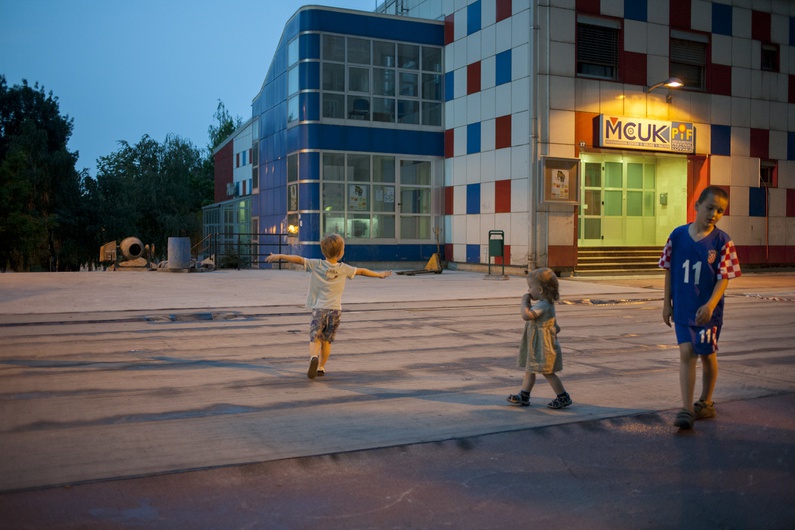 The plateau is Mamutica’s central square. In the Socialist Federal Republic of Yugoslavia, companies assigned apartments to their employees. Other apartments were bought by the army and reserved for military personnel. This kept social backgrounds diverse, making a sort of ‘Yugoslavia in miniature’.
The plateau is Mamutica’s central square. In the Socialist Federal Republic of Yugoslavia, companies assigned apartments to their employees. Other apartments were bought by the army and reserved for military personnel. This kept social backgrounds diverse, making a sort of ‘Yugoslavia in miniature’.
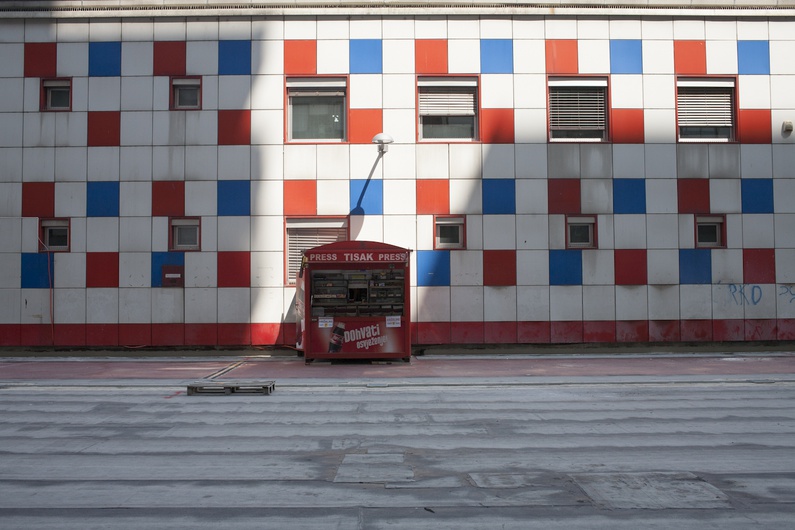 Dino, who is originally from Montenegro, has worked in the little kiosk in the centre of the plateau six days a week for 23 years. He lives in the centre of Zagreb and often walks to work. From the kiosk window, he observes the inhabitants and knows their stories. Many of them see him as a confessor. ‘In Mamutica you can have as much privacy as you want,’ says Ljlliana, but walking along the plateau, you feel the observing gazes of neighbours looking out from their balconies.
Dino, who is originally from Montenegro, has worked in the little kiosk in the centre of the plateau six days a week for 23 years. He lives in the centre of Zagreb and often walks to work. From the kiosk window, he observes the inhabitants and knows their stories. Many of them see him as a confessor. ‘In Mamutica you can have as much privacy as you want,’ says Ljlliana, but walking along the plateau, you feel the observing gazes of neighbours looking out from their balconies.
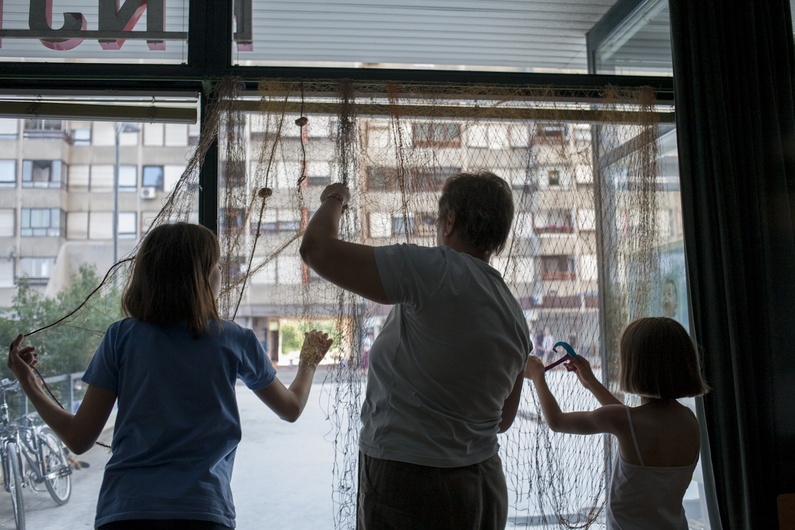 ‘During the war, the windows were covered with sticky tape to stop them breaking,’ remembers Vesna, who has worked in the Travno library since 1988. During the conflict, those who did not leave sheltered in the underground bunker. Armed with a net and papier-mâché, Vesna and some children decorate the library window to create a summery atmosphere for those who have not gone on holiday.
‘During the war, the windows were covered with sticky tape to stop them breaking,’ remembers Vesna, who has worked in the Travno library since 1988. During the conflict, those who did not leave sheltered in the underground bunker. Armed with a net and papier-mâché, Vesna and some children decorate the library window to create a summery atmosphere for those who have not gone on holiday.
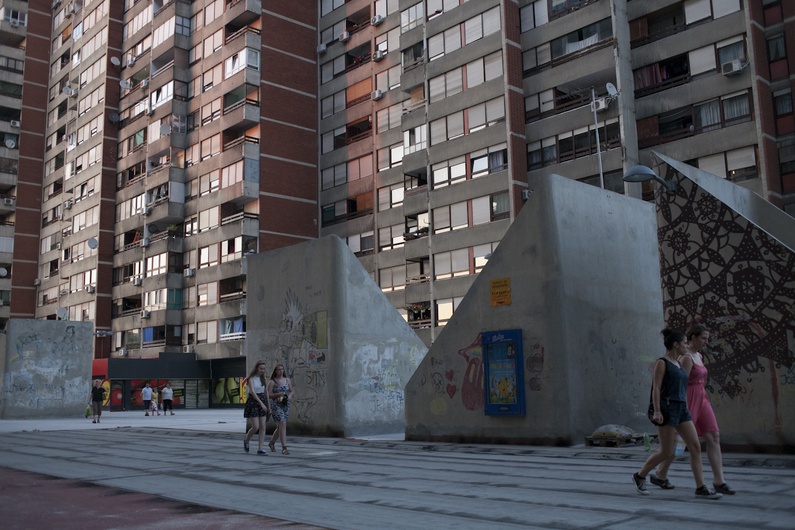 Pag lace features on the unesco’s cultural heritage list. It was drawn in 2009 on the wall of a ventilation shaft during an artistic performance, and can be seen to the right on the wall of the photo above. The work aimed to enrich the area with the symbolism of Croatian traditions.
Pag lace features on the unesco’s cultural heritage list. It was drawn in 2009 on the wall of a ventilation shaft during an artistic performance, and can be seen to the right on the wall of the photo above. The work aimed to enrich the area with the symbolism of Croatian traditions.
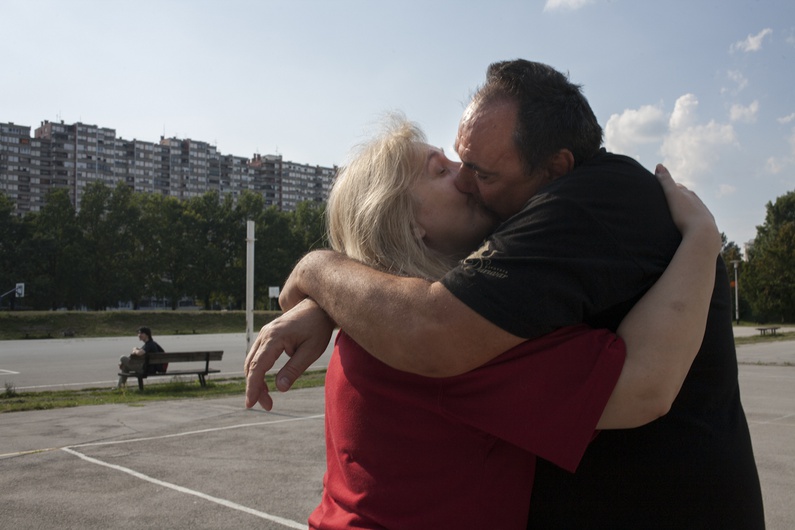 Irena and Jeliko live in the area and have known each other for years. He coaches the district’s youth football team and Irena’s son. Jeliko, from Dalmatia, was the third of three boys. His mother had wanted a girl. In Croatian, Jeliko means ‘wish’ or ‘desire’.
Irena and Jeliko live in the area and have known each other for years. He coaches the district’s youth football team and Irena’s son. Jeliko, from Dalmatia, was the third of three boys. His mother had wanted a girl. In Croatian, Jeliko means ‘wish’ or ‘desire’.
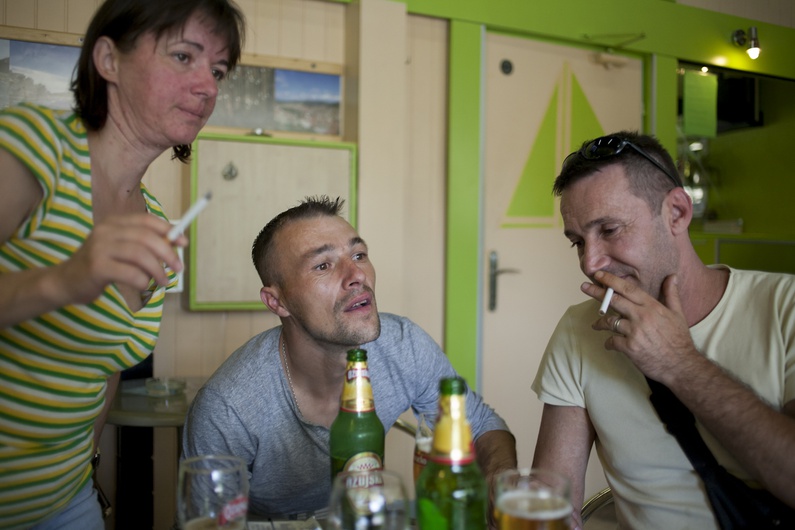 Before the war, in Travno, there were more than twenty bars. Today there are a lot fewer. In Mamutica, three of them face the plateau. The bar, Blato, is on the side of the street. Mima and some friends often meet there to have a beer together.
Before the war, in Travno, there were more than twenty bars. Today there are a lot fewer. In Mamutica, three of them face the plateau. The bar, Blato, is on the side of the street. Mima and some friends often meet there to have a beer together.
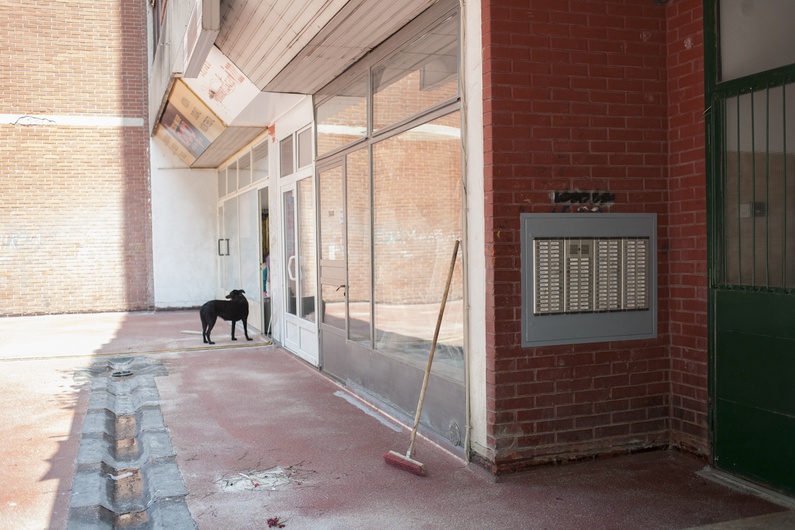 To make sure that there were enough students for the schools, there needed to be between eight and twelve thousand people living in Travno. However, the land available for construction was 30-40 hectares. These constraints shaped Kollenz’s work, given his choice to create the large park. The positive consequence is that children need only cross green spaces to get to school.
To make sure that there were enough students for the schools, there needed to be between eight and twelve thousand people living in Travno. However, the land available for construction was 30-40 hectares. These constraints shaped Kollenz’s work, given his choice to create the large park. The positive consequence is that children need only cross green spaces to get to school.
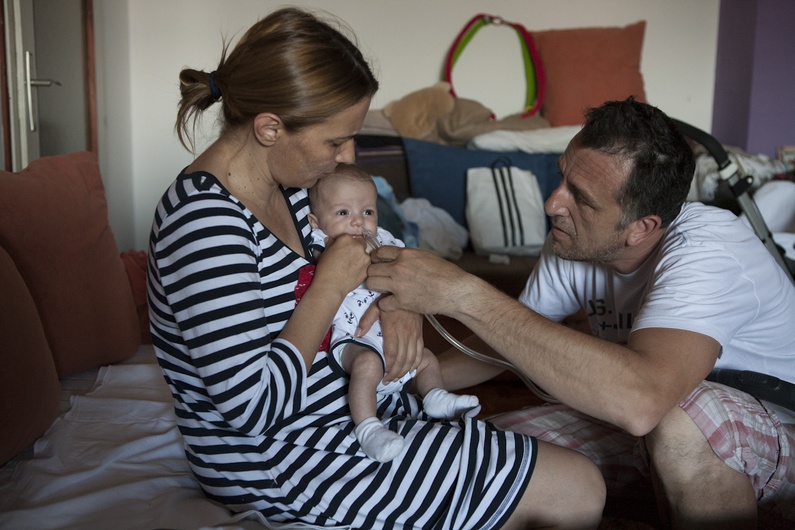 Renato and his partner have named their son Zen. ‘He will have a task to fulfil when he is older, he will have to understand the reason for his name,’ says the rapper. ‘This will help him to overcome life’s difficulties.’ By the end of this year, Renato will have lived half his life in the Socialist Federal Republic of Yugoslavia, and half in independent Croatia.
Renato and his partner have named their son Zen. ‘He will have a task to fulfil when he is older, he will have to understand the reason for his name,’ says the rapper. ‘This will help him to overcome life’s difficulties.’ By the end of this year, Renato will have lived half his life in the Socialist Federal Republic of Yugoslavia, and half in independent Croatia.
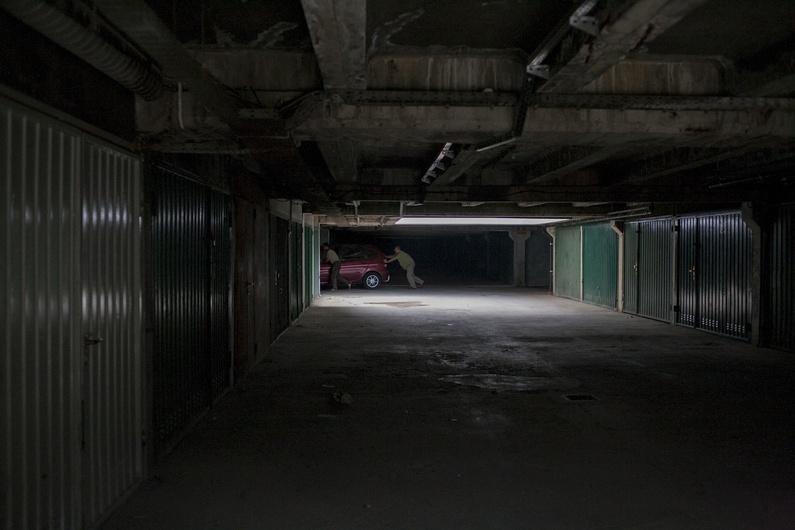 Residents are sceptical about Croatia’s entry into the European union in July 2013. However, there seem to be some clear advantages. Restoration of the plateau is in progress and the underground garages are being waterproofed. ‘Now we are in Europe, it will not be easy to work illegally anymore, there are rules to respect,’ states Vito, 34, who works in one of the corner shops in the area.
Residents are sceptical about Croatia’s entry into the European union in July 2013. However, there seem to be some clear advantages. Restoration of the plateau is in progress and the underground garages are being waterproofed. ‘Now we are in Europe, it will not be easy to work illegally anymore, there are rules to respect,’ states Vito, 34, who works in one of the corner shops in the area.
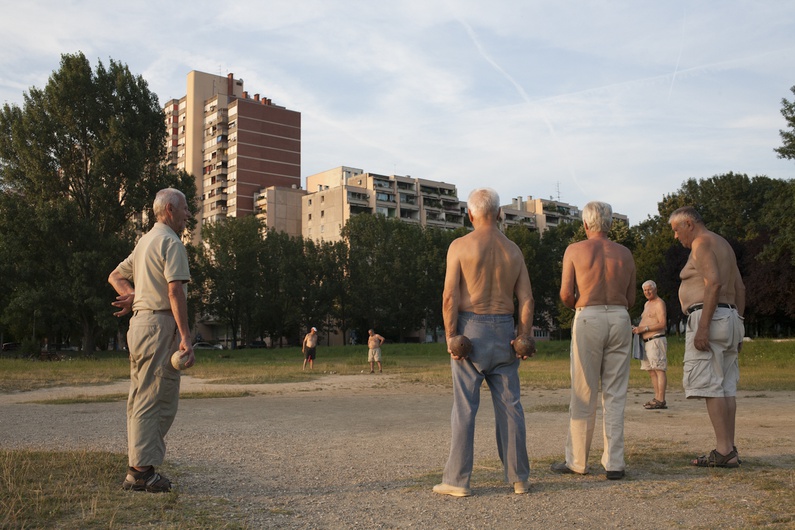 Many pensioners play boules and enjoy Travno’s open spaces. Until a year previously, they even tended vegetable gardens in some areas in front of the building. It was a way to pass on the culinary customs of their regions of origin.
Many pensioners play boules and enjoy Travno’s open spaces. Until a year previously, they even tended vegetable gardens in some areas in front of the building. It was a way to pass on the culinary customs of their regions of origin.
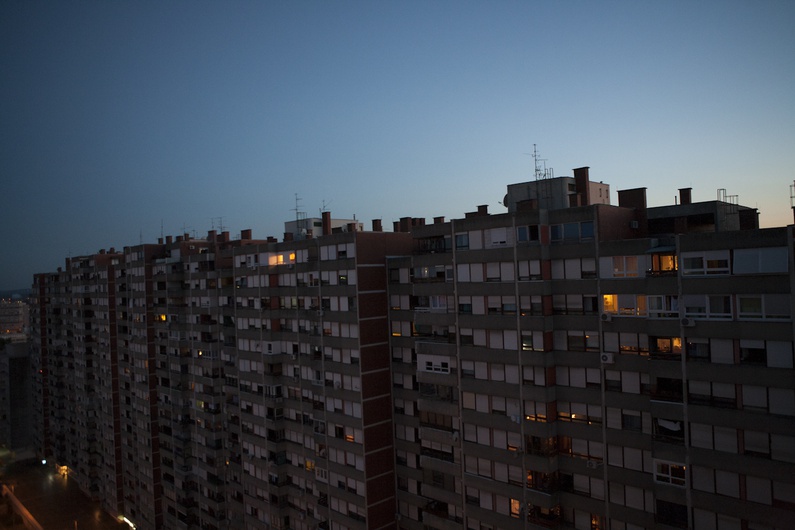 At the end of the day, to the tune of a typical Croatian ‘turbo folk’ song, the lights of Mamutica’s 1, 166 apartments are turning on. Petra, 19, is studying to become a teacher. She smiles at me from a balcony on the seventeenth floor of the little mammoth. ‘The first time you look down, you are scared, then you get used to it,’ she explains in perfect English. ‘Sometimes though, I would like to have something other than this huge building before my eyes. I would like to be able to see a bit further away.’
At the end of the day, to the tune of a typical Croatian ‘turbo folk’ song, the lights of Mamutica’s 1, 166 apartments are turning on. Petra, 19, is studying to become a teacher. She smiles at me from a balcony on the seventeenth floor of the little mammoth. ‘The first time you look down, you are scared, then you get used to it,’ she explains in perfect English. ‘Sometimes though, I would like to have something other than this huge building before my eyes. I would like to be able to see a bit further away.’
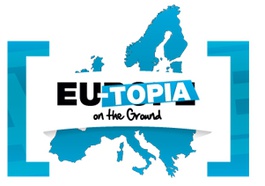 This is the first in a series of special monthly city editions on ‘EUtopia on the ground’; watch this space for upcoming reports ‘dreaming of a better Europe’ from Warsaw, Naples, Dublin, Zagreb and Helsinki. This project is funded with support from the European commission via the French ministry of foreign affairs, the Hippocrène foundation and the Charles Léopold Mayer foundation for the progress of humankind
This is the first in a series of special monthly city editions on ‘EUtopia on the ground’; watch this space for upcoming reports ‘dreaming of a better Europe’ from Warsaw, Naples, Dublin, Zagreb and Helsinki. This project is funded with support from the European commission via the French ministry of foreign affairs, the Hippocrène foundation and the Charles Léopold Mayer foundation for the progress of humankind
Translated from Croazia: un mammut in Europa



